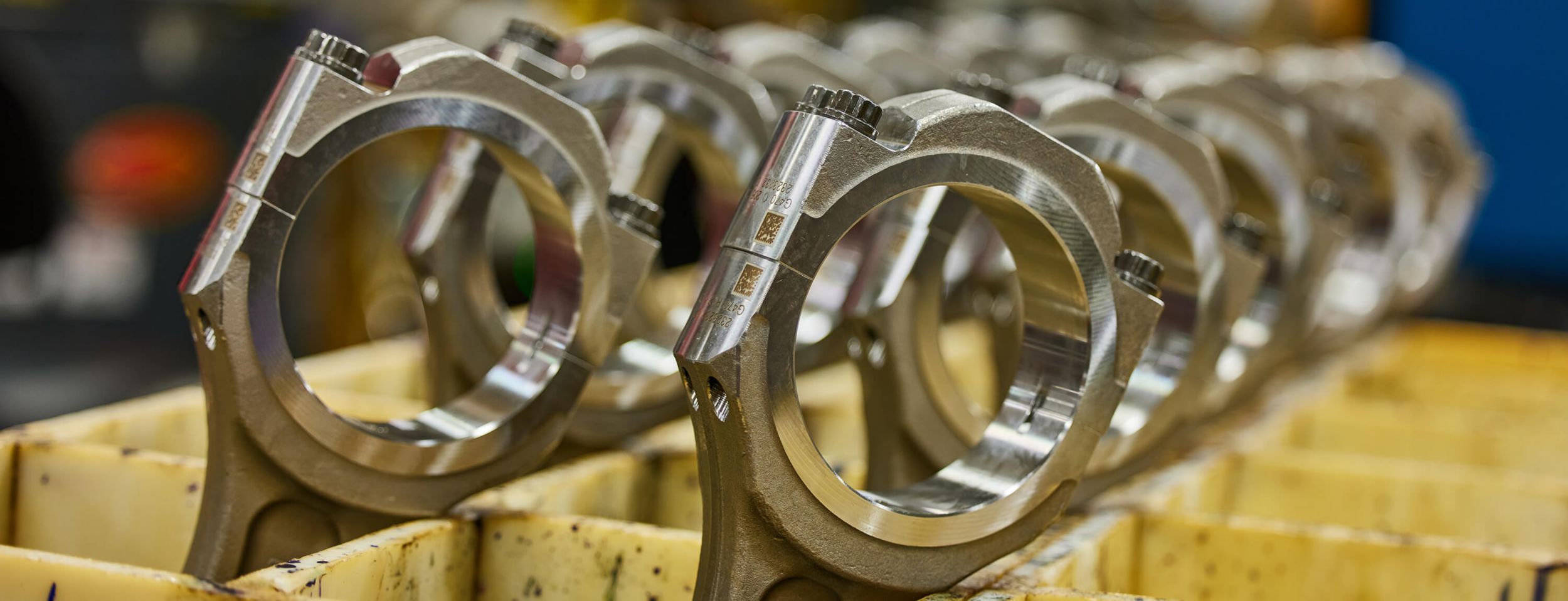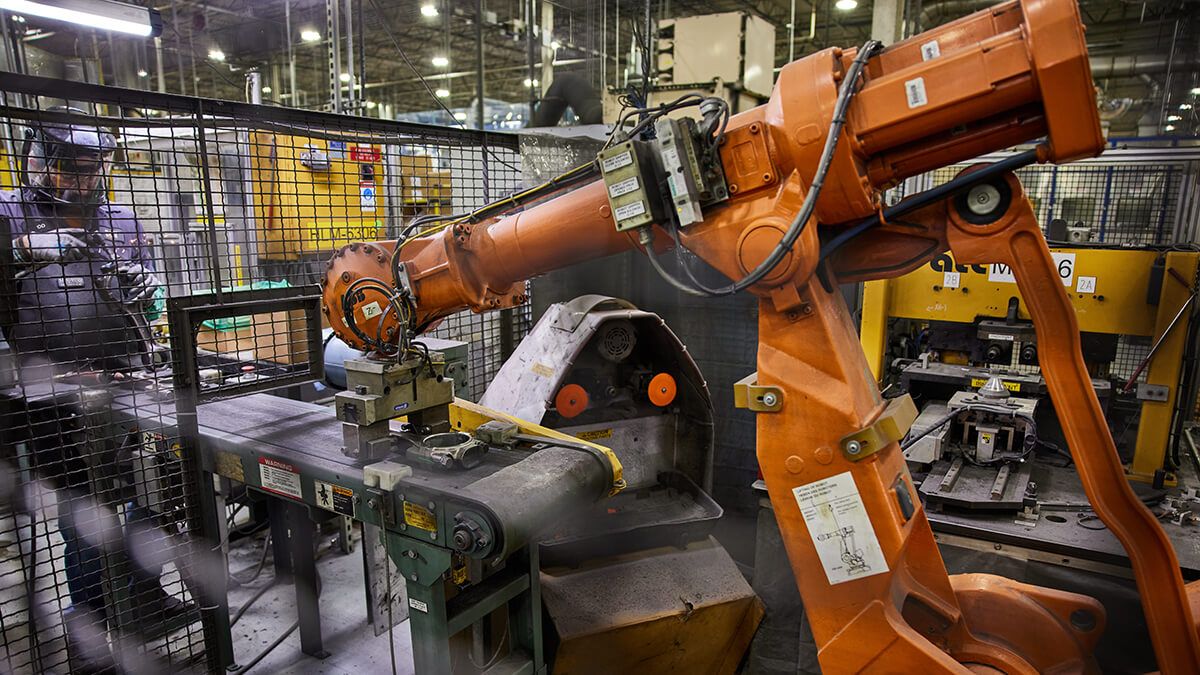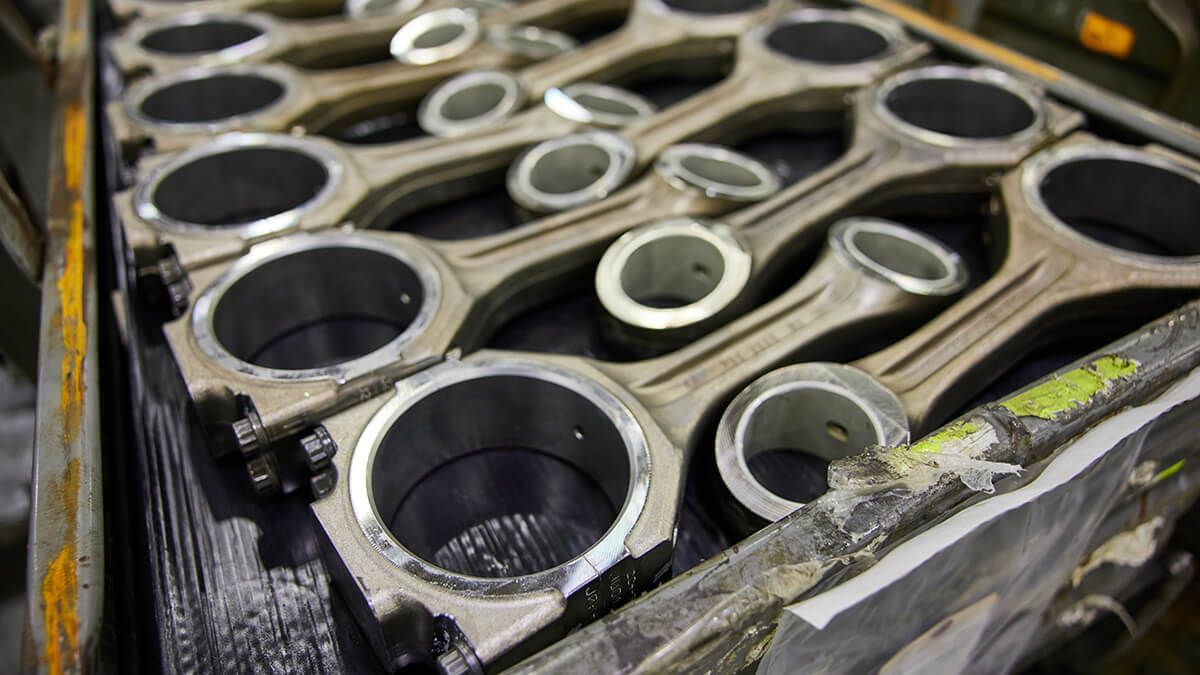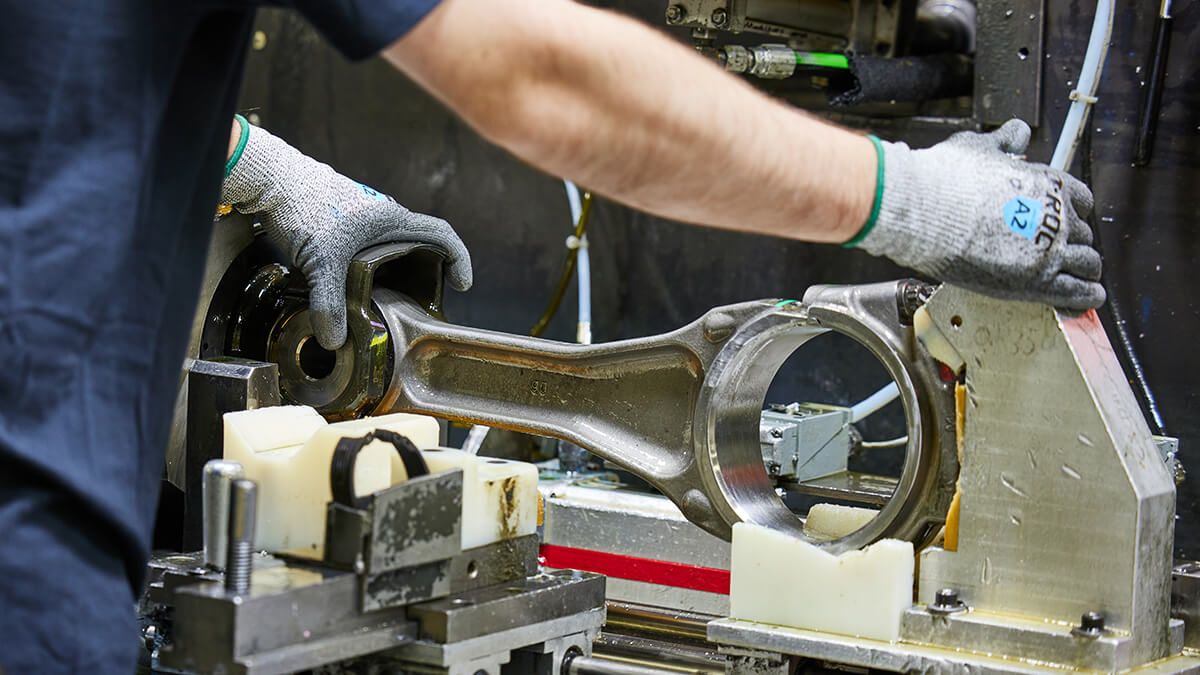If you already have an existing account with another Cat App, you can use the same account to sign in here.
One Account. All of Cat.
Your Caterpillar account is the single account you use to log in to select services and applications we offer. Shop for parts and machines online, manage your fleet, go mobile, and more.
Account Information
Site Settings
Security
Cat® Reman Cylinder Packs: Quality Control is Key
An engine overhaul costs money and downtime. Cat® Reman cylinder packs help save on both. They contain everything from the liner and piston to retainers and seals. And Cat Reman cylinder packs maintain quality at each step of the remanufacturing process.
Estimated read time: 7 minutes
When overhauling an engine, installing a Cat® Reman cylinder pack can save time because everything in the pack is preassembled and installed as a unit. The assembled parts in the pack are:
Connecting rod
Connecting rod bolt
Wrist pin
Piston
Piston rings
Piston pin retainer clips
Piston skirt, if applicable
Cylinder liner with seal kit
And each unit is rigorously inspected, so you know you’re getting genuine Caterpillar reliability. But how does the Cat Reman team make sure everything meets Caterpillar performance specifications? Cat Reman Product Engineer Scott Brinkmeyer says quality control starts the minute used parts arrive at a Cat Reman facility.
“Caterpillar gets the used iron from dealers, including full cylinder pack assemblies, and they get sorted by their specific part number and family,” Brinkmeyer explains. The sorted parts are then moved to Cat Reman's cleaning and assembly facilities.
CAREFUL DISASSEMBLY AND CLEANING
The first step, naturally, is disassembly. Brinkmeyer says, “The bearing of the connecting rod is removed and recycled. That is a wear component on every connecting rod and some pistons. From there, they all go through an aggressive wash and rinse."
Everything is “thoroughly cleaned, even to the point where surface rust will be taken off. Then they start to spur out to their respective inspection or machining areas,” Brinkmeyer explains.

SPECIALIZED PROCESSES
Some parts of the cylinder pack assembly are never reused, such as the cylinder liner, piston rings and snap rings. The rest, including specialized components for different engine types, are remanufactured.
The first items to be salvaged, Brinkmeyer says, are the connecting rods. “They undergo a bend-and-twist measurement to verify they conform to our reusability guidelines. Cat 3500 connecting rods go through a rigorous verification process to check for signs of cracks or cracking. If any cracks are found, that rod is sent to the recycling scrap tub.”
The team also torques the connecting rod bolts to Caterpillar specifications prior to crank bore measurements to make sure the diameter is within reusability specifications.
The next step is installing the pin bore bushing. "A brand-new bushing is cooled to extreme cold through liquid nitrogen and pressed in place. Then it's proof-load qualified to make sure that it doesn't come out of the connecting rod. Every single connecting rod that we remanufacture goes through this process."
The bushing is then machined to meet print specifications, meaning that it conforms to the same design as a new Cat part. “Our overall goal is to verify that every part we receive meets standard Caterpillar specifications,” Brinkmeyer adds. “If it doesn't, then we scrap it. We don't want that to go out the door.”
After machining, parts are assigned a Cat Reman part number and date code. And those parts get a final rinse and a rust-preventive layer.

A CULTURE OF QUALITY
At the end of the line, brand-new connecting rod bolts are installed. Of course, Brinkmeyer says, even something as simple as putting in bolts is no casual job. “For each of our connecting rods, regardless of size, we have a detailed inspection list to verify each part meets our internal and customer expectations.”
These inspection lists were developed by a team of engineers and technicians. “Each of our technicians on the line has a responsibility to verify, check and double-check each of these key features,” Brinkmeyer notes.
The remanufacturing team uses many industrial grade measuring, or metrology, tools. "These specialized instruments are qualified and strictly controlled, which is standard across Caterpillar for any type of metrology tool."
After remanufacturing, the connecting rods and pistons go through a final wash process that includes additional rust preventive, Brinkmeyer says. “That's another thing that's really critical to quality — the cleanliness.”
PRECISION ASSEMBLY
The final steps involve pack assembly and packaging. That’s where Jimmy Harvell takes over. As a cylinder pack manufacturing engineer at the Prentiss facility, his job is to make sure the packs are assembled with quality and precision.
"Before the first piece is assembled, we inspect it to make sure the part numbers and pieces are the correct ones for the cylinder pack assembly. We do this every time we change pack arrangement numbers, when parts are replenished, and for the very last piece of every run," Harvell says.

All cylinder packs are quality inspected for critical features before being boxed and shipped to a customer. The multiple quality checks can include using tools like a vision system and robot scanning. For example, the 3500 and C175 Cat Reman cylinder pack assembly process includes using optical scanners to check for proper cylinder ring part number, orientation, gap location and go/no-go gauges for piston rod retaining rings to confirm proper seat installation. Automating these processes helps deliver a quality product every time.
From there, the piston assembly is laser-etched with a barcode for traceability, and it is set down at the unload station for the operator to retrieve and move to the snap ring process. “Once this system knows and registers that the snap ring is in and seated, the assembly is allowed to advance to the next station,” where a piston pin is used to marry the connecting rod to the piston assembly and the second snap ring is installed Harvell says. Sequences are programmed into a software package that tracks the parts through the assembly process and will fault out if there are any out of process or uncompleted steps. We use specialized tooling to compress the rings on the piston and, after that, the assembly is inserted into the liner.
PACKAGING MATTERS, TOO
At the end of the line comes packaging — another precise, multistep process. “The parts are preserved and protected from the elements,” Harvell explains. “We add a cap plug to the liner to keep the piston/rod assembly in the liner until it’s used. We then pick the assembly up and put it in vapor corrosion inhibitor (VCI) packaging. The assembly gets placed in a box, any additional components or paperwork are added, the box is closed up and the label on the box is verified.”
After assembly and packaging, packs are routed for internal use within Cat Reman short blocks, long blocks and engines, or they are routed to parts disposition centers to support dealer and customer rebuilds.
“Throughout all of our pack lines, we have multiple layers and levels of inspection, quality checks and audits,” Harvell says. The goal is to make sure every Cat Reman product delivers like new performance. These many steps, Harvell and Brinkmeyer agree, are why time-sensitive, value-conscious customers can have total confidence in every Cat Reman cylinder pack that comes off the line.
Check out the range and variety of available Cat Reman parts.







